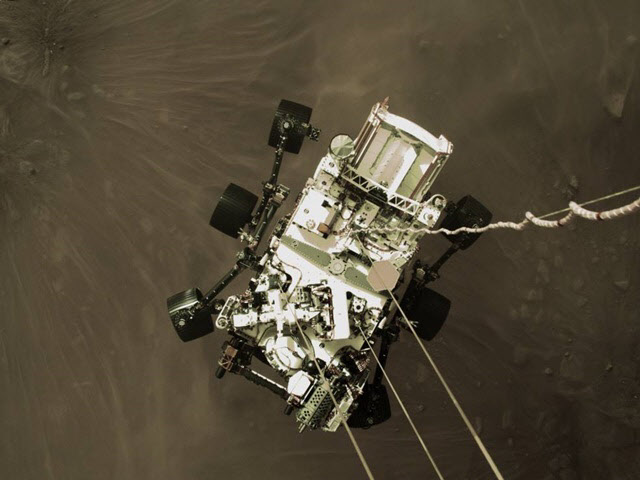Mars has recently been crowded with probes from countries around the world. A rover (Mars exploration vehicle) sent by the United States, a traditional space powerhouse, accomplishes everything from entering the Mars atmosphere to landing on the surface of Mars, while China launched an’All in One’ probe consisting of an orbiter, lander, and rover. I’m doing it. In addition, as the Mars probe of the UAE, an emerging country in space development, has settled on Mars orbit, humanity’s expectation for Mars exploration is growing.
|
The reasons for exploring Mars vary from country to country
Why are countries around the world now challenging Mars exploration? First of all, there is a timing aspect. The distance between Earth and Mars gets closest every 26 months. The launch of the three countries also took place at the end of July of last year, as the shortcut’Launch Window’ can be used to reduce the time and cost required for Mars exploration by using the optimal orbit.
The common exploration reason among exploration countries is due to scientific curiosity. Typical examples are the case of analyzing the atmospheric environment on Mars or analyzing rock and soil samples to find traces of ancient life. The collected information can be used as information for manned exploration.
However, different countries have different strategies for looking at space development. The United States will test new technologies and promote space development with the aim of establishing a human settlement environment through helicopters and carbon dioxide/oxygen converters (MOXIE) for the purpose of human habitation on Mars. On the other hand, China aims to build a space powerhouse that will respond to the United States by challenging manned Mars exploration. The UAE aims to escape from oil-producing countries and present dreams and hopes for space development to young people, and use them as opportunities for industrial use of space development technology and job creation.
“If China and UAE conduct space exploration, the United States will explore the human settlement environment through space development,” said Lee Chang-jin, a professor at Konkuk University’s Department of Aerospace Information Systems Engineering. “Each country has different perspectives, but it is based on a national vision. He advised that the part of pioneering Mars should be impressed.”
Mars must endure extreme environments
When will the manned exploration of mankind come true? Mars has been pioneered for more than 60 years since the Soviet Union launched the first Mars probe,’Masnik 1’in 1960. Following the former Soviet Union (Russia), various countries including the United States, Japan, Europe, India, and the UAE have joined, but the only countries that successfully landed on Mars are the United States and the former Soviet Union.
The National Aeronautics and Space Administration (NASA), with the most advanced technology, plans to seal and store samples collected by Perseverance, and launch a follow-up probe in July 2026 to return the samples to Earth. Then, in 2035, manned human Mars exploration will also be promoted.
However, experts predicted that it would take more time for manned exploration. It means that the Mars environment must be verified through unmanned exploration, and an infrastructure to withstand the extreme environment of Mars must be established.
Transportation is also a key issue. Currently, it takes 6 to 7 months one way for the unmanned probe to reach Mars. Considering the weight of the crew and safety devices in manned exploration, a period of at least 9 months is required. Currently, it is the stage of verifying the performance of the prototype’Starship’, a spacecraft intended to go from SpaceX to Mars.After development, there is a possibility to move quickly and safely to Mars, as if a civilian manned spacecraft returned to and from the International Space Station (ISS).
In order to actually perform manned Mars exploration, the infrastructure that humans will use must also be built locally. Mars’ atmosphere contains 96% of carbon dioxide and consists of argon and nitrogen.
Atmospheric pressure is only 7/1000 of the Earth. The temperature drops to -160 degrees in winter and rises to 20 degrees in summer, maintaining the level of -63 degrees. It is a virtually impossible environment for humans to live.
Moon Hong-gyu, a senior researcher at the Korea Astronomy Research Institute, said, “Unlike Earth, Mars is exposed to solar wind and spacecraft because of its thin magnetic field, so we need to find a way to withstand temperature and radiation environment.” “Gravity is also one-third of Earth, and monsoons are “We also need a solution for the feature of being covered with sand breeze when it blows.”
In recent years, international cooperation and research on the Space Resource Site Utilization (ISRU), which makes and procures necessary items on Mars on site, are also active.
Shin Hu-sung, head of the Future Convergence Research Division, Korea Institute of Construction Technology, said, “We are shifting to a paradigm for long-term exploration activities beyond the concept of simply reciprocating Mars exploration including the moon exploration, and the need to build infrastructure for humans to stay “It will grow,” he said. “There is also a research on making blocks and construction materials by procuring the infrastructure necessary for repetitive exploration activities locally.”

